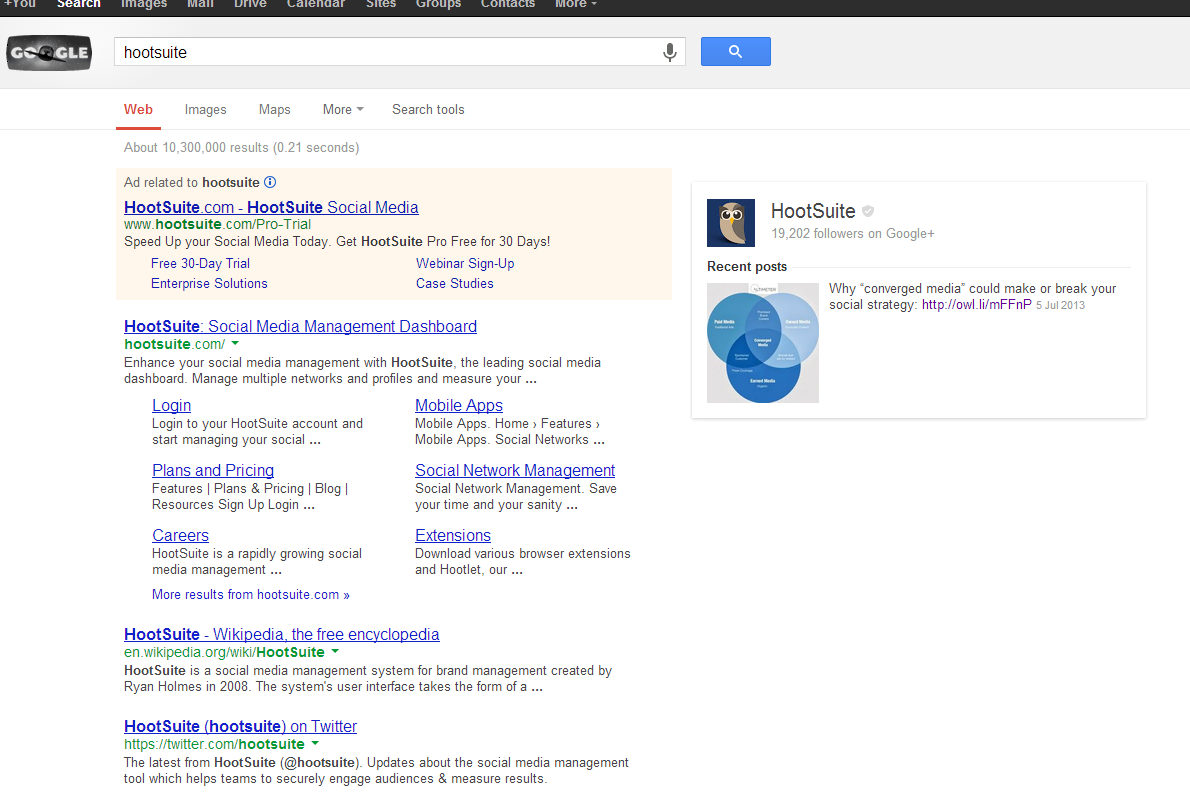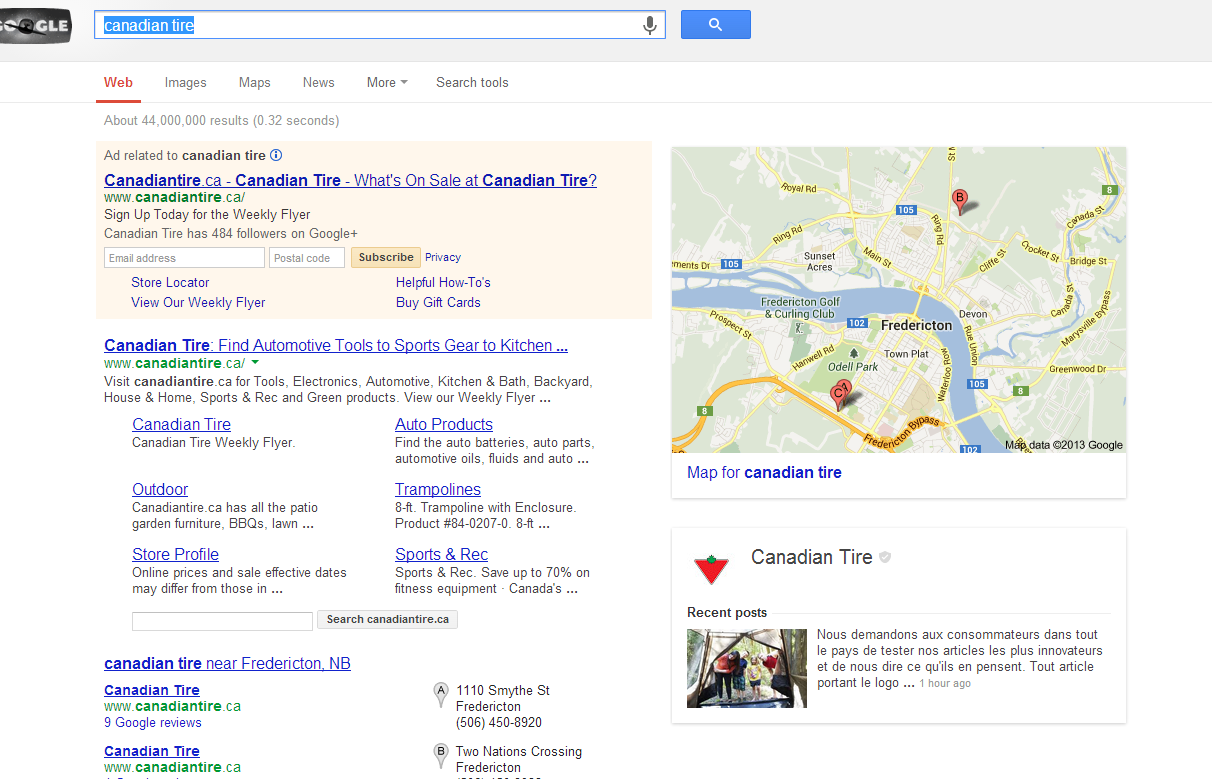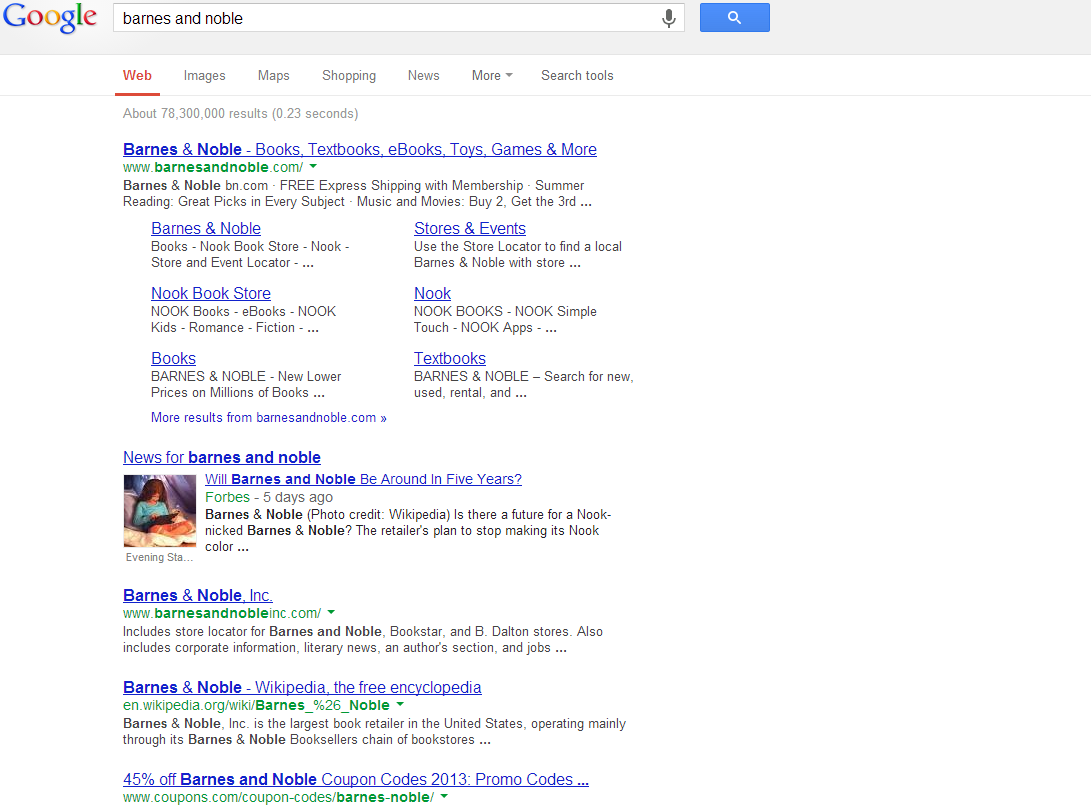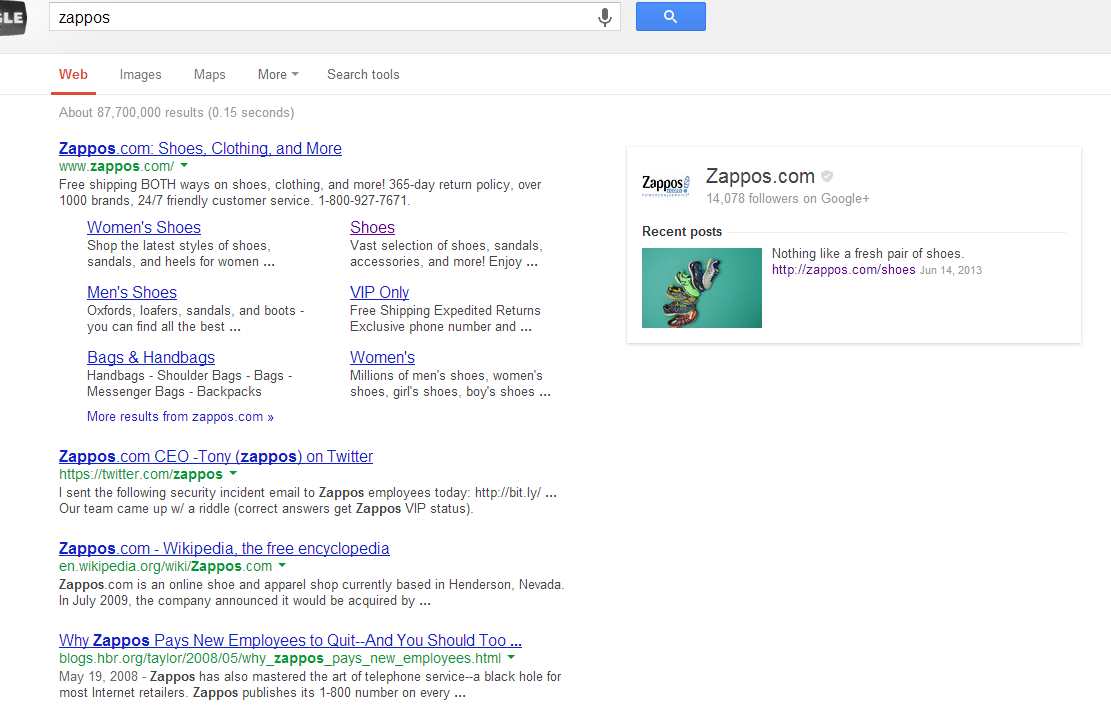What does it look like these days when someone Googles your brand? For years, that question has been under the purview of “online reputation management.”
Phase I of that field (1998-2007) was roughly: did you screw up your meta-tags and title tags, inadvertently block Google and other search engines with your robots.txt file or some arcane spider-stopper, or have you been so lazy about any kind of online engagement or presence that malicious mentions of your company overshadow the core information that you hope prospective customers find when they first go looking?
In Phase II (2008-2012), there were more ways of, in essence, complying with certain norms and channels offered by Google that could help you put a lot of useful information out for human consumption, much of it predictably appearing above the fold on the first page of search results. Along with your main home page (and increasingly, most companies took advantage of the opportunity to take up vastly more screen real estate by taking advantage of SiteLinks in the organic SERP’s), you’d do well if you had significant video content. You could also take up further space with a nice juicy paid search unit on your brand term, made larger through the incorporation of SiteLinks. Many companies began monitoring for new good and bad mentions — at first, in a semi-clueless way, and over time, in a more ongoing fashion using well-established tools.
Welcome to Phase III (2013-). Google is eager to provide brands with additional means of demonstrating their personalities and thought leadership. Certainly this would not be the case for Google’s bread and butter — searches with high commercial intent that Google must earn revenue from. But on brand keyword searches, it is clearly Google’s wish to promote the whole idea of “deep content” and “ongoing engagement.” Across the board, Google is frustrated with faux content and cheap tricks used by bit players attempting to rank well using SEO parlor tricks. The flip side of Google’s more punitive side — algorithmically and manually cracking down on cheating and purveying of scraped or low-quality content — is this apparent campaign to provide publishers and brands with incentives to be engaged and interesting. Whether this is done indirectly, via blog posts and articles, or in a more integrated fashion, through direct posting in Google’s own social media environment (Google+), Google’s environment seems bent on rewarding the adopters. So it almost goes without saying that, in this context, “adopter” means
Among other things, this continues to be serious business in the undeniable battle for mindshare between Google and Facebook, as companies and “environments.” Google+ isn’t Facebook now and may never be. But it can be hazardous to your business health to underestimate Google. (Remember the adoption curves of GMail and Chrome?) A recent search ranking factors study by Searchmetrics points out — almost as an aside — that Google+ is on pace to meaningfully eclipse Facebook if you go by certain metrics (+1’s vs likes, etc.) by the middle of 2016.
The adopters are already being rewarded. Those integrating their blog posts and overall presence with a clearly identifiable Google+ identity are showing up with nice large boxes — complete with logo, image, and rich snippet — to the right hand side of the SERP. Rather than a set of plain listings, then, a search for (say) Hootsuite provides a showcase for the brand, positioning it as a thought leader you should consider following.
Even a formerly clumsy brand like Canadian Tire is apparently going all in with its social media strategy, enjoying a similar treatment with the large visible Canadian Tire logo to the right hand side of the screen. In this case, the user isn’t taken to a blog post on the CT site, but rather directly to its Google+ page. There are some clear hiccups here: the post I got was in French and it felt like I came into the middle of a conversation I don’t understand… something about helping their team kick the tires, as it were, on this very social media experiment. This effort is threatening to be a bit of a Meatball Sundae.
Barnes & Noble turns up in the sad camp. The flailing, mid-sized retailer of books appears to be a non-adopter of both social media integration and paid search with SiteLinks. This draws even more attention to a negative mention: a Forbes story asking if the company will be around in five years.
Another company that could be doing better? Hormel. Perhaps the problem lies in their association with Spam. But that’s a debate for another day.
And how is a reputational legend like Zappos doing in this environment? Very well, it seems. A search for “Zappos” brings up the same box, image, and logo with a link, no doubt emanating from a post on their Google+ page. This one’s a little weird, because all it says is “Nothing like a fresh pair of shoes,” with a link, simply, to the Zappos home page. Not exactly thought leadership. Well, if the shoe fits…
Google has set the table. Now, we all have a lot of work to do.




